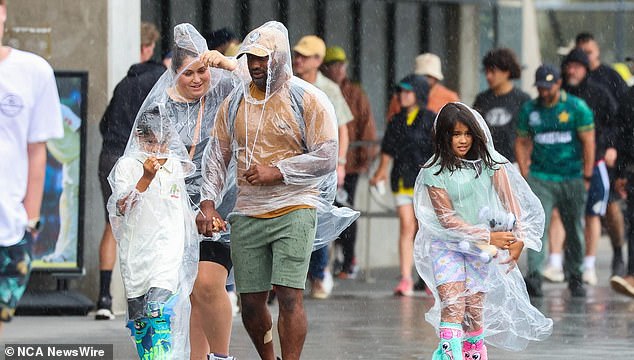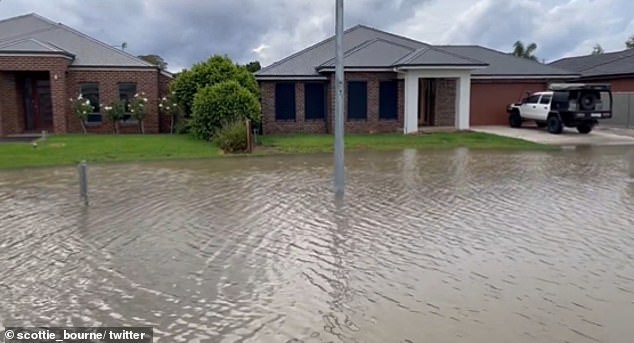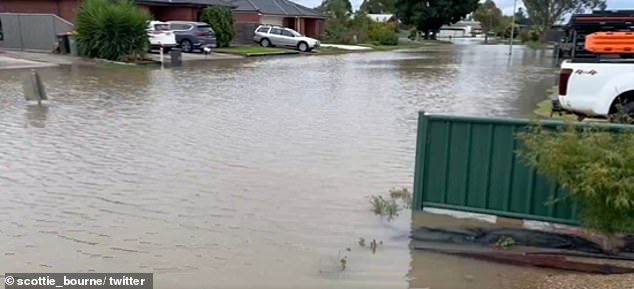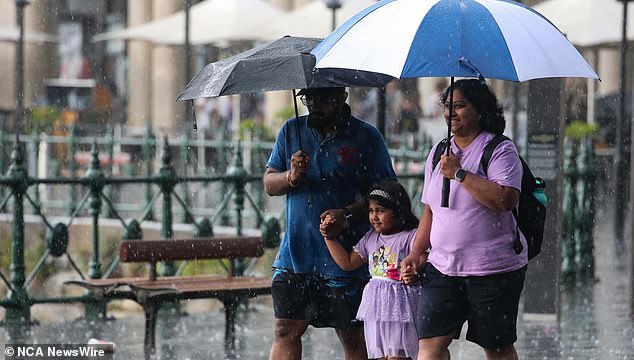An urgent storm warning has been issued for Australia as flooding hits Victoria
After weeks of severe storms and heavy rain, Australia's eastern states are likely to experience more weeks of wet weather, with one meteorologist criticizing a “common misconception” that an El Nino summer guaranteed dry conditions.
More than 337 requests for assistance have been made across Victoria as the state faces a potentially life-threatening deluge of rain over the next 24 hours.
As of 9pm on Sunday evening, Victoria's State Emergency Services have conducted two flood rescues across the states, with the busiest units being in Warrnambool (56 requests), Bendigo (32 requests) and Kerang (23 requests).
At 7.43pm the Bureau of Meteorology issued a flood warning for Gippsland, central and northern Victoria as a low pressure system moves eastwards across the state, with severe gales and heavy rain expected to continue on Monday.

Residents on Australia's east coast have been warned to bunker down for a new round of storms likely to last until January (pictured)
The weather authority has warned that 'widespread rainfall' of more than 100mm will hit flood watch areas from Sunday evening, with the possibility of isolated moderate flooding from Monday morning.
The deluge is expected to continue until Tuesday, with rain and showers expected to gradually ease over the course of the day.
A severe thunderstorm warning has also been issued for heavy rainfall, damaging winds and large hailstones for residents of Mallee and parts of the forecast Northern Country and Wimmera districts, including the possibility of flash flooding.
At 4.45pm a rain gauge at Warrnambool Airport recorded 43mm of rain in just one hour alone.
People have been urged not to drive through floodwaters, to monitor forecasts and warnings, and to be prepared to move to higher ground if flooding occurs.
A similar weather warning has also been issued for parts of NSW, including Wagga Wagga and Deniliquin.
Victoria's Emergency Management Commissioner Rick Nugent warned on Saturday that the state could receive a total of about 150mm of rain, but warned that more than 200mm of rain could fall across the state.
He urged Victorians to bunker down, “especially people staying in caravan parks and camping along creeks and waterways.”
The state's rivers and creeks are already quite full after weeks of recent rain, raising the risk of flash flooding.
Sky News meteorologist Alison Osborne said there is a “high chance of above-average rain across northeastern and eastern Australia” before conditions start to dry out in February.


In Kerang, northern Victoria, efforts continue to drain the northern and southern parts of the city, which were flooded after a deluge of rain (pictured)


She said the 'hateful' positive Southern Annular Mode (SAM) – a ring of westerly winds hugging Antarctica – was promoting easterly winds and torrential rain along Australia's east coast.
“That's quite difficult to predict in advance after a few weeks, but at the moment that has been a big driver of the rain and storm events in eastern Australia in particular,” she said.
“That thing has been positively wobbling since early December, and will probably stay that way for the next week or two.”
Ms Osborne's warning of a wet January applies to this weekend.
The Bureau of Meteorology is forecasting 'continued' wet weather to develop this weekend and into next week.
A low pressure system will develop in South Australia on Saturday, with associated rain band and possible thunderstorms, reaching Adelaide by late afternoon.
The system is expected to reach western NSW, south-west Queensland, Victoria and Tasmania from Sunday.
The agency's senior meteorologist Angus Hines said widespread rainfall would affect areas of Tasmania, Victoria and “most of” NSW.
“If you combine the wet weather in the east and south with the daily storms in the north, it will be quite difficult to find parts of central and eastern Australia that have a dry stretch of three days ahead of them,” he says. said.
“Most of the country is lining up for some form of wet weather.”
The wet weather forecast comes despite an El Nino warning, which has been active since September.
However, Ms Osborne said it was a 'common misconception' that El Nino meant less rainfall in the summer months.
“The impact of El Nino rain from November is quite marginal in eastern Australia,” she said.


The weather forecast for this coming weekend suggests that most of the country will be hit by rain
In comparison, a La Nina warning had a stronger impact on rainfall patterns, leading to higher precipitation levels and lower temperatures.
However, moisture is expected to disappear from February onwards, bringing “a fairly high chance of above-average temperatures and a fair chance of extreme temperatures in the northern tropics and the northwest.”
While temperatures may not be as dramatic in areas of south-eastern NSW, Canberra and southern Queensland, Ms Osborne said “everywhere else is normal or unusually warm”.
The threat of bushfires could also increase as conditions become drier in February.
Although the immediate threat is hampered for a while after it rains, with Ms Osborne noting that 'it's quite difficult to light a wet match', the rain could also promote the growth of new vegetation that could promote fires once the heat and dry conditions return.
“If there is a return to drier than average conditions, combined with high temperatures, that could change things quickly,” she said.
